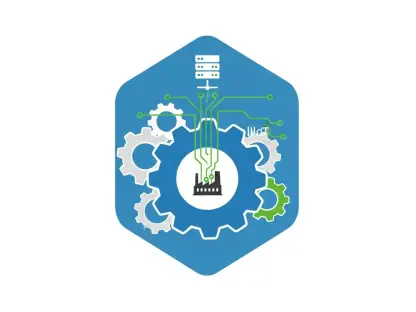I’m thrilled to sit down with Kwame Zaire, a renowned manufacturing expert with a deep focus on electronics, equipment, and production management. With his extensive knowledge in predictive maintenance, quality, and safety, Kwame offers invaluable insights into the evolving landscape of drone technology and corporate expansions in emerging markets like India. Today, we’ll explore the strategic moves of companies venturing into South Asia’s drone sector, the potential of this burgeoning market, and the broader implications for industries and economies in the region.
Can you share your perspective on why a company might choose India as a hub for manufacturing drone components?
India presents a unique combination of factors that make it an attractive destination for manufacturing drone components. First, there’s a vast pool of skilled labor at competitive costs, which is critical for precision industries like electronics and equipment. Additionally, the Indian government has been pushing initiatives to boost local manufacturing, offering incentives and infrastructure support. The growing domestic demand for drones, especially in sectors like agriculture and logistics, also means companies can serve a local market while scaling up for exports. It’s a strategic move to be close to both supply chains and end-users, reducing costs and improving turnaround times.
What do you see as the broader impact of such manufacturing initiatives on India’s industrial ecosystem?
These initiatives can significantly strengthen India’s industrial ecosystem by fostering innovation and building local expertise in high-tech fields like drone technology. When companies set up manufacturing units, they often collaborate with local suppliers and talent, which creates a ripple effect—upskilling workers, improving quality standards, and encouraging entrepreneurship. Over time, this can position India as a global leader in drone tech, much like it has become in IT services. It also aligns with the country’s push for self-reliance, reducing dependence on imports while boosting economic growth through job creation and foreign investment.
How would you assess the potential of the drone market in South Asian countries like Sri Lanka and Bangladesh?
The drone market in South Asia, particularly in countries like Sri Lanka and Bangladesh, is at an exciting inflection point. These regions have significant agricultural bases, where drones can revolutionize precision farming—think crop monitoring, pesticide spraying, and yield optimization. Beyond agriculture, there’s growing interest in enterprise applications like infrastructure inspection and disaster management. The relatively low penetration of advanced tech in these markets means there’s a huge untapped opportunity. However, affordability and regulatory frameworks will play a big role in determining how quickly adoption scales.
In which industries do you anticipate the strongest growth for drone usage in these regions?
Agriculture is definitely at the forefront. Drones can address critical challenges like labor shortages and inefficiencies in large-scale farming, which are common in Sri Lanka and Bangladesh. I also see strong potential in logistics, especially last-mile delivery in hard-to-reach areas, and in environmental monitoring, given the region’s vulnerability to climate change impacts. Governments and private players are starting to recognize these benefits, so we might see targeted investments in these sectors to accelerate drone integration over the next few years.
What strategic advantages come from investing in a drone-tech firm to enhance enterprise solutions in a market like India?
Investing in a drone-tech firm offers a direct entry into cutting-edge innovation and a ready network of enterprise clients. For instance, holding a significant stake in a company focused on drone solutions can provide access to scalable technologies tailored for industries like mining, construction, and energy. It also positions the investor as a key player in shaping industry standards and capturing market share early on. In India, where enterprise adoption of drones is growing rapidly, such partnerships can be a game-changer, offering both technological and competitive edges.
What challenges might a company face when exploring the production of enterprise-grade drones in a new market like India?
Setting up production for enterprise-grade drones in India comes with several hurdles. Regulatory compliance is a big one—drone manufacturing and usage are heavily governed, and navigating these policies can be complex and time-consuming. Then there’s the challenge of building a reliable supply chain for high-quality components, as dependency on imports can drive up costs and delay timelines. Additionally, ensuring skilled labor and maintaining strict quality control in a new setup can be daunting. Companies need to invest in training and partnerships to overcome these barriers effectively.
How do you think consumer tech products like digital action cameras and gimbals are performing in India’s e-commerce landscape?
Consumer tech products like action cameras and gimbals have seen remarkable traction in India’s e-commerce space. The rise of content creators, vloggers, and adventure enthusiasts has fueled demand for such gear, and platforms like Amazon India and Flipkart make these products accessible to a wide audience. Competitive pricing, coupled with easy financing options and robust marketing through reviews and influencer partnerships, has driven their popularity. It’s a clear sign of how India’s digital economy is shaping consumer behavior and creating new market niches.
What are your thoughts on expanding retail footprints for premium brands in emerging markets like India?
Expanding retail for premium brands in India is a smart move, given the country’s growing affluent class and appetite for luxury goods. Launching boutique stores in high-traffic areas like malls in major cities can create brand visibility and a direct connection with consumers who value exclusivity. However, success hinges on understanding local tastes and building trust. Complementing physical stores with online presence and B2B distribution can further amplify reach, especially for niche products like premium coffee or tech gadgets. It’s about balancing prestige with accessibility.
What is your forecast for the drone industry’s growth in South Asia over the next decade?
I’m very optimistic about the drone industry in South Asia over the next decade. We’re likely to see exponential growth driven by advancements in technology, decreasing costs, and increasing awareness of drone applications across sectors like agriculture, logistics, and public safety. Governments in the region are also starting to craft supportive policies, which will be crucial for scaling adoption. I expect South Asia to emerge as a significant player in the global drone market, with India potentially leading the charge through innovation and manufacturing. The key will be addressing challenges like infrastructure and affordability to ensure inclusive growth.









